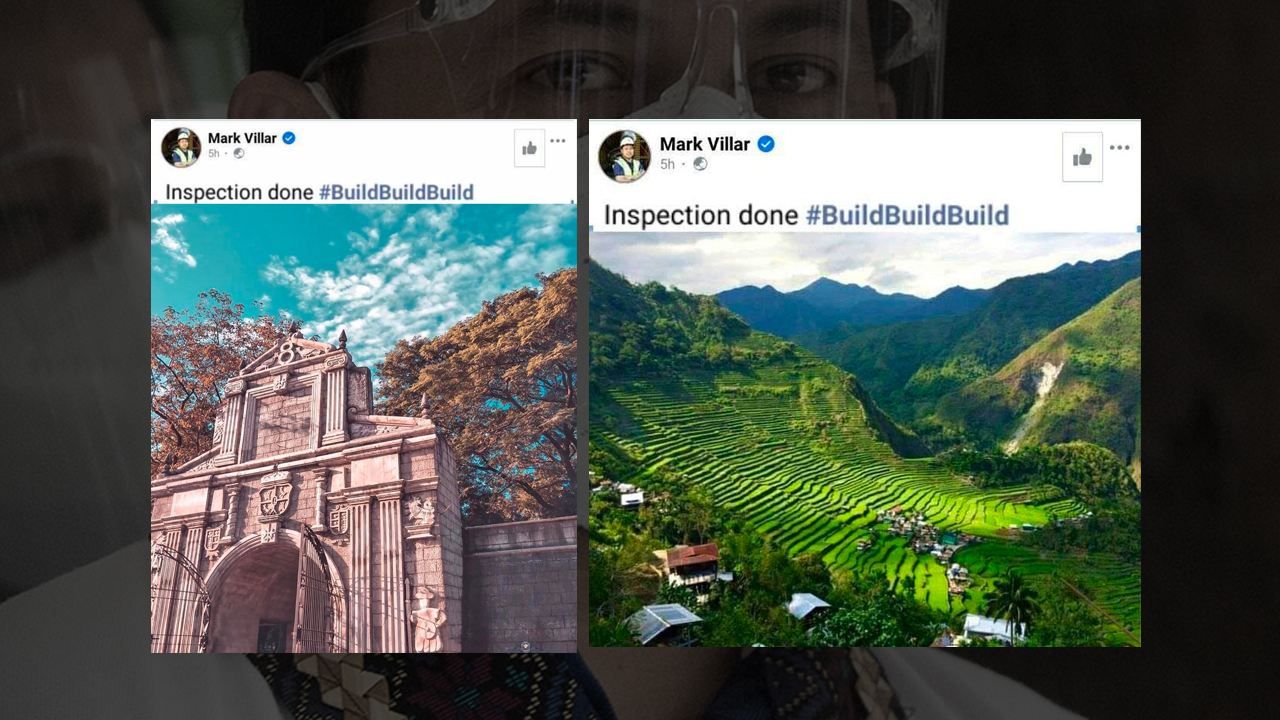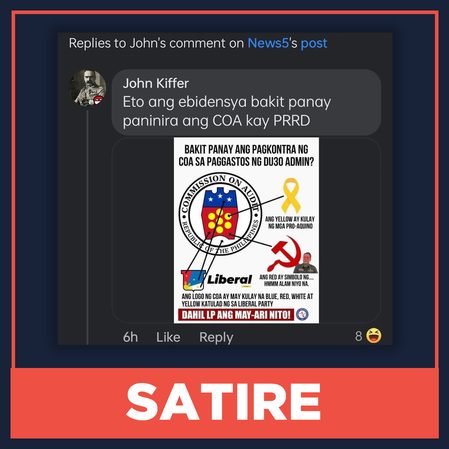SUMMARY
This is AI generated summarization, which may have errors. For context, always refer to the full article.


It all started after Department of Public Works and Highways (DPWH) Secretary Mark Villar posted on his verified Facebook page a photo of the Iloilo Esplanade on Friday, September 3. Villar captioned it with “#BuildBuildBuild.”
Build Build Build is the defining economic program of the Rodrigo Duterte administration.
But there is one problem: parts of the Iloilo Esplanade, a linear park by the river, were already existing even before Duterte was sworn into office.
Comments on the post denounced Villar’s supposed “credit-grabbing,” with some pointing out that the construction of the Iloilo Esplanade started during previous administrations. Many of those who commented identified themselves as residents of Iloilo.
Following this, multiple posts and memes imitating Villar’s Iloilo Esplanade post have spread on the Internet. These are examples of satire.
What is satire?
Satire is a literary technique that uses humor, irony, parody, exaggeration, or ridicule. It criticizes its subject in order to show the subject’s faults. As Rappler wrote before, satire should involve an expert balance of criticism and humor for it to be considered successful.
A piece of writing or online post that uses exaggeration or ridicule does not automatically make it a satirical post. It is also not enough that the content is funny alone. It has to point to an uncomfortable truth and show the readers that there is something that needs to be changed.
As the BBC’s glossary of terms puts it, satires have “a serious underlying social comment or important message to put across.”
What makes the #BuildBuildBuild posts satirical?
Simply put, the circulating screenshots parodied Villar’s post about the Iloilo Esplanade and used humor and exaggeration to ridicule the DPWH secretary.
There is no way that the Leaning Tower of Pisa in Italy, the Christ the Redeemer statue in Brazil, the Pyramids of Giza in Egypt, the Colosseum in Italy, or the Stonehenge in England could be part of the Duterte administration’s Build Build Build program because they are all located in other countries.

There were also posts that featured the Ifugao Rice Terraces and the Polytechnic University of the Philippines, but even the existence of these two locations is already widely known – thus making the joke painfully obvious.

Some of the posts even took it further by incorporating fictional locations in the posts, including the Shiganshina District from the popular Japanese manga series Attack on Titan, and The Wall from the US television series Game of Thrones.
One even combined real and fictional elements by putting characters from the Japanese animation Boku no Pico within the vicinity of the Tokyo Tower in Japan.

The bottom line is that all these outrageous posts wanted to tell an important message: stop the credit-grabbing.
In a separate post on September 3, Villar explained that more than half of the projects involving the Iloilo Esplanade were constructed during Duterte’s administration.
Still, many found this a convenient way to beef up the administration’s accomplishments – especially since Build Build Build is often touted as the “centerpiece” economic program of the Duterte administration.
Critics of the administration have repeatedly pointed out that the Build Build Build program has been grabbing the credit for multiple infrastructure projects that were already conceptualized and started during the previous administrations.
When to fact-check satire?
The satirical posts on Villar are obviously outrageous, making it hard for people to take it seriously. But not all posts claiming to be “satire” can simply get away with producing fabricated content.
In Rappler’s experience, there are at least two considerations in fact-checking satire content:
- When the content just aims to disinform.
During the 2019 midterm elections, the infamous website Adobo Chronicles published a fake story about Vice President Leni Robredo supposedly making a promise to step down from her position if no member of the Otso Diretso slate wins a Senate seat.
While Adobo Chronicles claims to be a satirical website, it has been known to spread misleading information. Moreover, the fake story did not have an underlying social comment or important message to put across – it just published an article full of fabricated information that deceived its readers.
Labeling posts as satire helps inform readers to not take the content seriously, but simply saying that a post is satire does not absolve it of any harm caused by the potential disinformation it can spread.
- When people already perceive it as true.
There are times when satirical posts get taken out of context, especially if it gets shared repeatedly in different online platforms.
An example is a graphic that circulated in August showing the logo of the Commission on Audit with anti-Duterte elements. The original post was shared in a meme group on Facebook and was properly labeled as satire, but when users shared the photo outside of the Facebook group, they cropped out the disclaimer. This indicates the intention to mislead.
If the post does not make people laugh and instead just makes readers confused, that is not satire. That’s disinformation. – Rappler.com
Add a comment
How does this make you feel?

![[ANALYSIS] 10 Build, Build, Build projects that started before Duterte](https://www.rappler.com/tachyon/2021/06/tl-bbb-credit-grabbing-june-23-2021.jpeg?fit=449%2C449)









![[ANALYSIS] Investigating government’s engagement with the private sector in infrastructure](https://www.rappler.com/tachyon/2024/04/tl-gov-private-sectors-infra-04112024-1.jpg?resize=257%2C257&crop=435px%2C0px%2C1080px%2C1080px)
![[OPINION] Cities and public spaces should be for people first](https://www.rappler.com/tachyon/2024/04/imho-people-first-city-04132024.jpg?resize=257%2C257&crop_strategy=attention)

There are no comments yet. Add your comment to start the conversation.